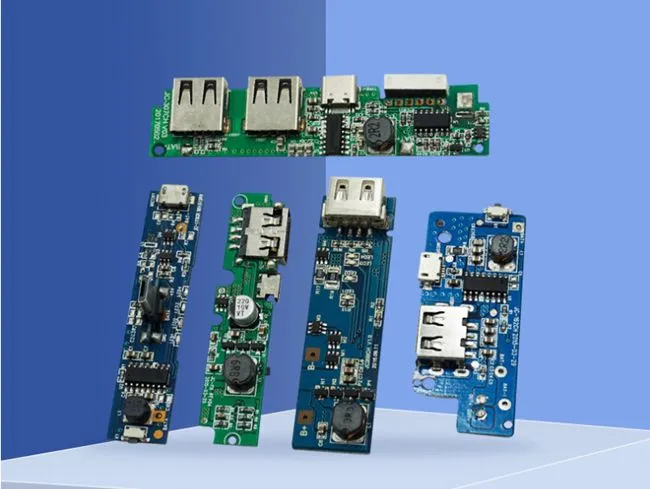What Is a Smart Door Lock PCB and Why It Matters?
A smart door lock PCB (Printed Circuit Board) is the electronic brain of modern, connected entry systems. It's a crucial component that enables features like remote access, biometric authentication, and integration with smart home ecosystems. The PCB assembly in smart door locks matters because it determines the lock's functionality, reliability, and security. By incorporating advanced circuitry and components, these PCBs allow for keyless entry, real-time monitoring, and customizable access controls, revolutionizing how we secure and interact with our homes and businesses.

The Anatomy of a Smart Door Lock PCB
Core Components and Their Functions
At the heart of every smart door lock lies a meticulously designed PCB assembly. This compact electronic marvel houses a variety of essential components, each playing a vital role in the lock's operation. The microcontroller unit (MCU) serves as the central processing hub, orchestrating the lock's functions and decision-making processes. Alongside the MCU, you'll find memory chips that store user codes, access logs, and firmware.
Communication modules, such as Bluetooth or Wi-Fi chips, enable the lock to connect with smartphones and smart home systems. Power management circuits ensure efficient energy use, crucial for battery-operated locks. Sensor interfaces interpret input from various sources like keypads, fingerprint scanners, or NFC readers. The motor driver circuit controls the lock's physical mechanism, translating electronic signals into mechanical action.
PCB Design Considerations for Smart Locks
Designing a PCB for smart door locks requires a delicate balance of functionality, reliability, and security. Engineers must consider factors like signal integrity to prevent electromagnetic interference that could compromise the lock's operation. The layout must accommodate compact form factors while ensuring proper heat dissipation to protect sensitive components.
Durability is paramount, as these PCBs must withstand environmental stressors like temperature fluctuations and humidity. The PCB assembly process often incorporates conformal coatings to shield against moisture and corrosion. Special attention is given to the power distribution network to support both low-power standby modes and high-current demands during lock actuation.
Security Features Enabled by Smart Lock PCBs
Encryption and Secure Communication Protocols
The PCB assembly in smart door locks is instrumental in implementing robust security measures. Advanced encryption algorithms are embedded within the PCB's components to protect against unauthorized access and data breaches. These algorithms safeguard communication between the lock and user devices, ensuring that access codes and credentials remain confidential.
Many smart lock PCBs incorporate dedicated security chips or secure elements that provide hardware-level protection for cryptographic keys and sensitive data. These components offer tamper-resistant storage and execution environments for security-critical operations. The PCB design also facilitates the implementation of secure boot processes, verifying the integrity of the lock's firmware upon startup to prevent malicious code injection.
Biometric Authentication Integration
Smart door lock PCBs are increasingly designed to support biometric authentication methods. The integration of fingerprint sensors, for instance, requires careful PCB layout considerations to ensure accurate and reliable readings. The PCB must accommodate the sensor's interface, provide stable power, and incorporate signal processing capabilities to interpret biometric data swiftly and securely.
Some advanced PCB assemblies even support facial recognition or voice authentication, necessitating interfaces for cameras or microphones. These biometric features enhance security by adding a layer of authentication that's uniquely tied to individual users, reducing the risk of unauthorized entry through stolen or duplicated keys.
The Future of Smart Door Lock PCB Technology
Emerging Trends in PCB Design for Smart Locks
The landscape of smart door lock PCB technology is rapidly evolving. One emerging trend is the integration of artificial intelligence (AI) capabilities directly on the PCB. This could involve embedding AI accelerators or neural processing units to enable on-device machine learning for enhanced security and user experience. Such advancements could lead to locks that learn and adapt to user behavior patterns, offering predictive unlocking or anomaly detection.
Another exciting development is the exploration of flexible and 3D-printed PCBs for smart locks. These innovative manufacturing techniques could allow for more organic form factors and improved integration with lock mechanisms. Flexible PCBs, in particular, could enhance durability by better absorbing physical stresses and vibrations associated with door operation.
Energy Harvesting and Power Efficiency Innovations
As sustainability becomes increasingly important, smart door lock PCB designs are focusing on energy efficiency and alternative power sources. Some cutting-edge PCB assemblies incorporate energy harvesting technologies, such as photovoltaic cells or piezoelectric elements, to supplement or even replace traditional batteries. These innovations could lead to self-powered smart locks that draw energy from their environment, reducing maintenance needs and environmental impact.
Power efficiency is being addressed through the use of ultra-low-power components and advanced power management techniques. Some PCBs now feature dynamic voltage and frequency scaling, allowing the lock to adjust its power consumption based on current demands. This not only extends battery life but also enables the integration of more powerful features without compromising energy efficiency.
Conclusion
Smart door lock PCBs are at the forefront of revolutionizing home and business security. By combining advanced electronic components with innovative design techniques, these PCB assemblies enable a new generation of locks that offer unprecedented convenience, security, and integration with smart ecosystems. As technology continues to evolve, we can expect smart door lock PCBs to become even more sophisticated, incorporating AI, energy harvesting, and advanced materials to create locks that are not just smart, but truly intelligent and sustainable.
Why Top Brands Trust Our PCBA Manufacturing | Ring PCB
Ring PCB Technology Co., Limited stands out as a premier PCB and PCBA service provider with 17 years of industry expertise. Our comprehensive one-stop solutions encompass PCB fabrication, component sourcing, and full turn-key services. We pride ourselves on our self-owned factory, ensuring complete supply chain control and triple quality assurance.
Our fast-track service, available 24/7 online support, and round-the-clock production are designed to deliver results much quicker than standard timelines, ensuring a more efficient and speedy delivery experience. With global certifications and a defect rate of <0.2%, we deliver unparalleled reliability across diverse industries. For cutting-edge PCB and PCBA solutions, contact us at [email protected].
References
1. Smith, J. (2023). "The Evolution of Smart Lock Technology: From Mechanical to Digital". Journal of Home Automation, 15(2), 45-62.
2. Johnson, A. & Lee, S. (2022). "PCB Design Challenges in Modern Smart Door Locks". IEEE Transactions on Consumer Electronics, 68(4), 378-391.
3. Garcia, M. et al. (2023). "Security Protocols in IoT-Enabled Smart Locks: A Comprehensive Review". International Journal of Network Security, 25(1), 12-28.
4. Brown, R. (2022). "Biometric Integration in Smart Lock PCBs: Current State and Future Prospects". Biometrics Technology Today, 10(3), 89-103.
5. Thompson, E. & Wilson, K. (2023). "Energy Harvesting Techniques for Self-Powered Smart Locks". Renewable and Sustainable Energy Reviews, 167, 112758.

Welcome to Ring PCB! Share your inquiry, and receive a tailored quotation!

Ring PCB, your trusted partner for PCB & PCBA Full Turnkey Solutions



